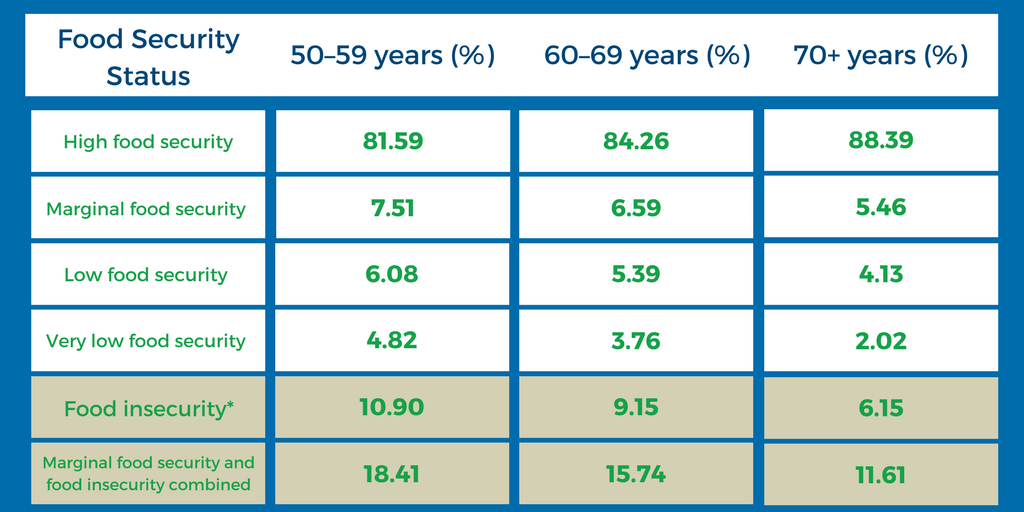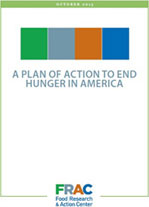May is Older Americans Month – an opportunity to raise awareness of important issues facing adults 50 and above across the nation.
In recognition of Older Americans Month, FRAC is releasing a three-part FRAC Chat blog series on food insecurity among older adults. This first post focuses on food insecurity’s prevalence as well as its risk factors among older Americans. Part 2 will concentrate on the impact of food insecurity on older adults’ health. The third and final installment will tackle how to address food insecurity among older adults.
Prevalence of Food Insecurity Among Older Adults
Research shows 10.9 percent of 50–59-year-olds and 9.15 percent of 60–69-year-olds are food insecure. The rates are lower — at 6.15 percent — for those 70 years of age and older. Part of the reason why food insecurity rates tend to decline with age likely is increased access to nutrition programs and to Social Security benefits as people age.

*Food insecurity is defined here as the combination of low food security and very low food security.
While these food insecurity rates are distressing, they would be even worse if the numbers included older adults who are marginally food secure. Among 50–59-year-olds, 10.90 percent are food insecure, but that rate jumps to 18.41 percent when combined with marginal food security; that is a 69-percent spike.
Risk Factors for Food Insecurity Among Older Adults
Certain groups are at higher risk than others. Research shows that food insecurity rates tend to be higher among older adults who are:
- Black;
- Hispanic;
- low income;
- less educated (i.e., less than a high school education);
- separated or divorced;
- never married;
- residing in the South;
- unemployed;
- living with a disability; or
- “younger” older adults (i.e., those who are 50–59 years of age).
Another significant risk factor for food insecurity occurs when an older adult lives in a household with children under 18 years of age. Parents, grandparents, and other caregivers often try to protect children from food insecurity by sacrificing their own food and nutrition needs so that the children can eat. National data on adult heads of household age 40 and older show that rates of food insecurity are two times higher among households with a grandchild present, compared to rates of food insecurity among households without a grandchild present.
Food insecurity affects millions of older Americans every day. Check back later this month to learn more about how food insecurity impacts older adults’ health and the solutions that exist to end it. In the meantime, share this blog on social media using the hashtag for Older Americans Month — #AgeOutLoud.



